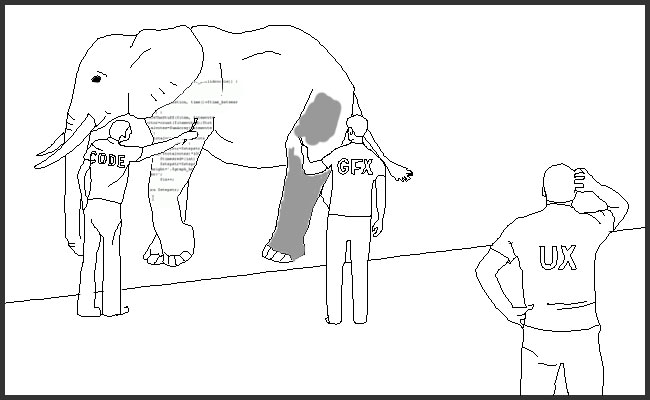As someone who professes to be not only a digital product manager but also a user experience designer, I wanted to devote this post to answering the question, what do user experience designers do?
Think of the UX designer less as a designer and more of a problem solver.
This is not to say that the UX’er doesn’t design. Of course we do, but our roles are much, much different than you may think. If we were to break the goal of the user experience designer role down to the bare bone definition, we would call UXers simply problem solvers.
A good user experience designer is really, really great at solving problems because the process, which is seeped in user centered design, can be applied to almost any issue a company is having.
So, before you can be a great problem solver you have to make sure you are solving the correct problem. Understanding the problem first, before jumping into the solution, is one of the most important arts of being a great UX designer.
Many times, clients will come to me with problems and before they even understand what their problem really means, they already have a solution they want made.
This is a big deal, because in reality, if we don’t define the problem, how do we know if our solution is the correct one?
Often times, clients will present us with what they believe the problem is. But once you get into the weeds and start digging deeper, the problem often changes and needs to be revisited.
For example, if we ask this client why they needed an iPad app they may say something like, we need to be cutting edge or we need to get more users. After digging even more, we find out that their nearest competitor recently took 5% of their user base,… and they just also released an iPad app.
So the client is assuming that this is the cause of the competitor’s spike. But what if the iPad app has nothing to do with the competitor’s spike in users.
Unfortunately, because we didn’t work to understand the problem in totality and really get to what the client was doing that caused users to leave and go to competitors, we just spent tens of thousands of dollars, creating a beautiful piece of software that nobody wants.
Thus, you need to understand the problem first.
Here are some of the types of questions I try to answer before figuring out the real problem:
- How is my client defining the success of my work?
- What impact do they want me to make?
- Are there numbers we are trying to reach?
- Will this solution have to lead to another?
- Are there other projects happening or planned that could influence
the solution that I will have to take into account? - What is the worst thing that could happen during this project?
- What does failure look like?
- Who out there has solved this problem, and what makes their solution awesome?
What you are trying to do when understanding the problem is really get to the business, stakeholder’s or client’s pain points.
You are trying to get to the why. And once you have done this, you can begin working on the solution.
If you have any questions about how to approach a user experience challenge, or just want to tell me I’m crazy… please comment.


